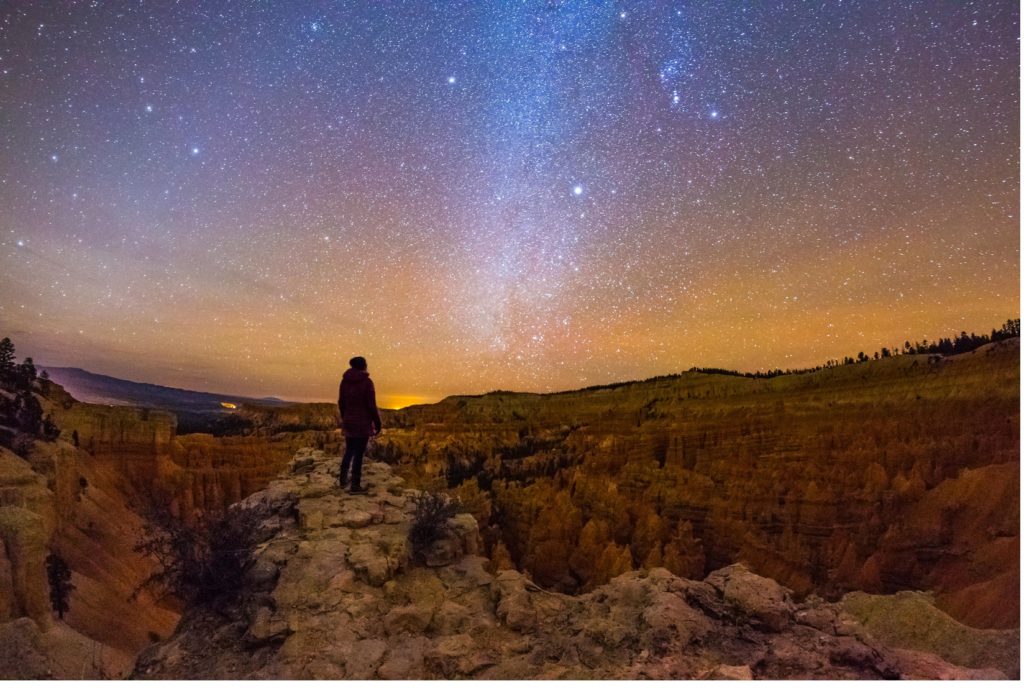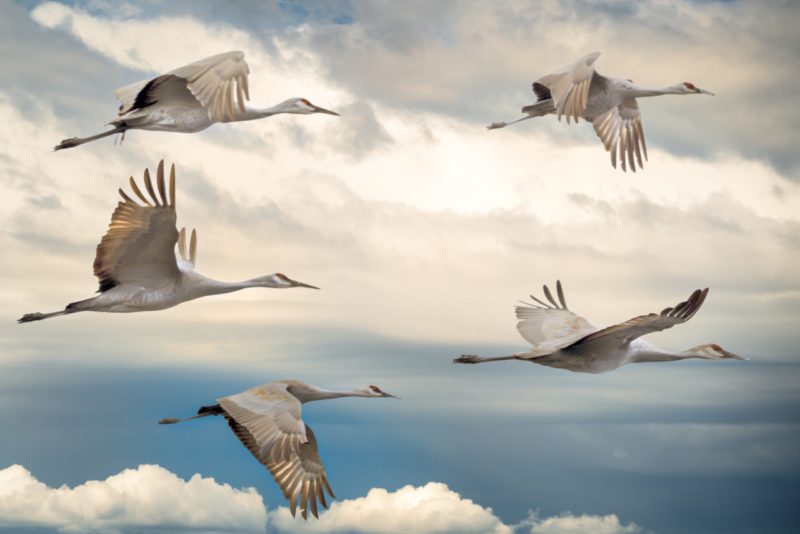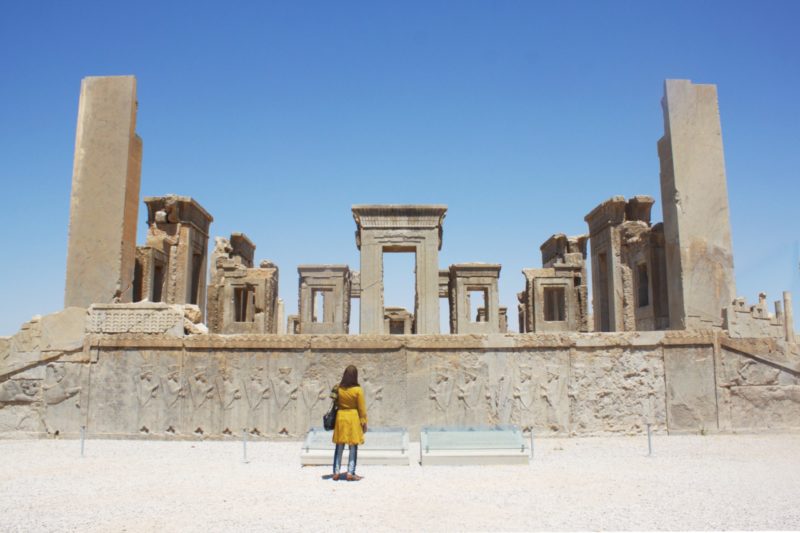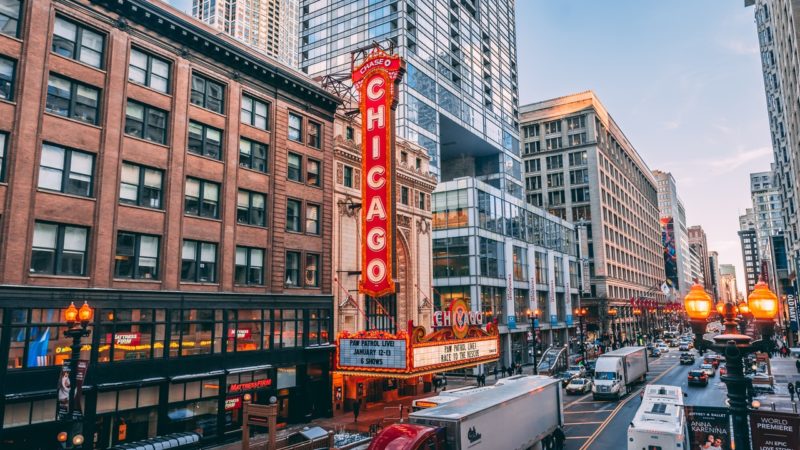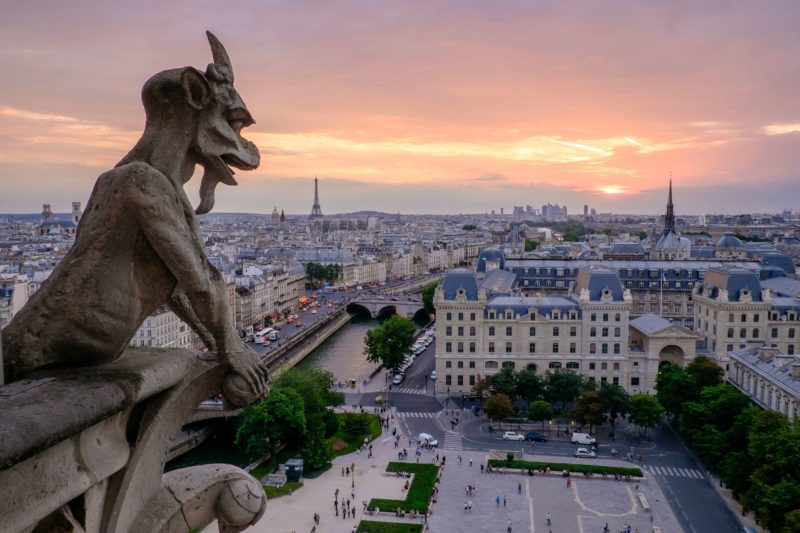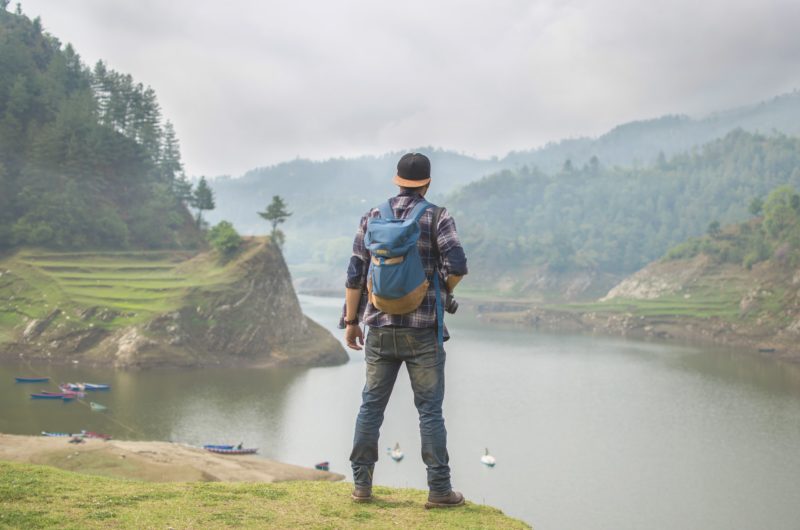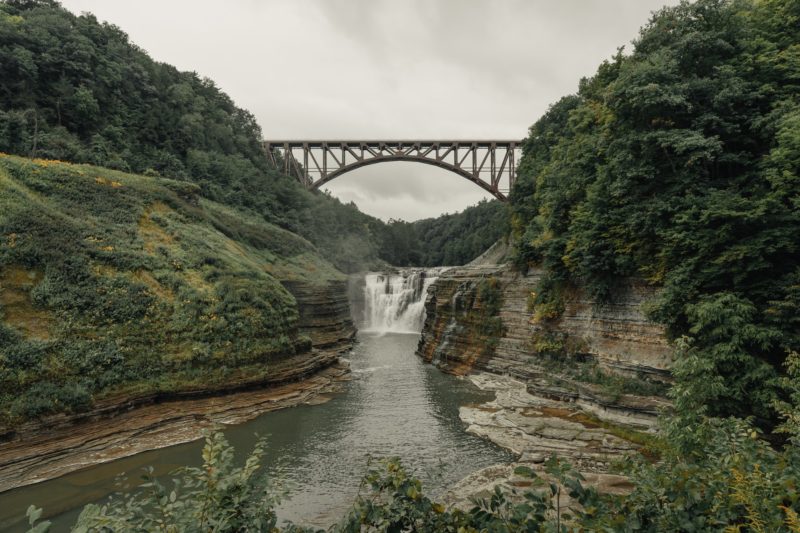To look up at a clear night sky and see millions of stars shooting and glittering throughout an unobstructed expanse is a truly awe-inspiring experience. As humans, we create light, through our homes, buildings, street lights, and various other infrastructure. This light glow can spread for hundreds of miles, making it hard to find the best places to stargaze.
Don’t know your supermoon from your supernova? That’s ok, because we’re here to help. This guide will tell you everything you need to know about the best dark sky locations around the world where you can activate your inner Galileo.
What is Stargazing?

Stargazing is the act of locating, observing, and enjoying the stars! And we’re not talking about the ones on Hollywood Boulevard – these stars are up in the night sky and visible to the naked eye. Stars can be seen from anywhere on Earth, but your chances of spotting your favorite constellations are much better in areas with low humidity, high elevation, no cloud coverage, and as little light pollution as possible.
What is Light Pollution?
Light pollution is the excessive use of artificial light. Much of the world’s outdoor nighttime lighting is overly bright, poorly aimed, improperly shielded, and sometimes completely unnecessary. This results in artificial light bleeding into the night sky, making it difficult, and sometimes impossible to see stars. We call this light pollution. Light pollution can come from all sorts of sources – buildings and factories, sports stadiums, advertising, roadways, and densely populated residential areas.

It might not seem as obvious a problem as air or water pollution, but light pollution can cause a whole slew of environmental, health, energy, and safety issues by disrupting the natural day-night pattern living things have been following for billions of years. Plants and animals depend on Earth’s daily light and dark cycles to dictate behaviors like eating, sleeping, protection, and reproduction. The night skies have also been used as a map for navigation, as an almanac and calendar, and as inspiration for untold numbers of poets, artists, astronomers, and deep thinkers.
The International Dark-Sky Association
Luckily, there is an entire organization devoted to dark skies. The International Dark-Sky Association (IDA) works to protect the night skies for present and future generations and recognizes locations around the world that have reduced their light pollution. Nearly any type of location can receive a Dark Sky designation – parks, wildlife management areas, national monuments, even entire cities without light pollution – but places that apply for IDA certification must undergo a rigorous audit and prove they’re serious about their skies.
Tips for Visiting Dark Sky locations
Organizing your travels around Dark Sky locations is one of the best and most sustainable ways to see the world. But there are some things to keep in mind if you are planning a stargazing trip. Here are our tips for making the most of your Dark Sky vacation!
- Arrive at your destination well before the sun sets so you can familiarize yourself with your surroundings and get set up. Whether you’re toting a camera and tripod, a telescope, or just a comfy chair and blanket for a cozy night of stargazing, you’ll want to establish a safe base camp before it gets too dark to see.
- Be aware that it takes about 30 minutes for your eyes to adjust to the night sky, so don’t get frustrated if you don’t see anything right away!
- Temperatures can drop rapidly at night, even in locations that were blazing hot in the middle of the day. Dress in layers, wear a hat, and pack an extra sweater. Need some fashion inspiration? Check out our guide to sustainable fabrics and eco-friendly clothing!
- Artificial lights can disturb nocturnal wildlife, disrupt astrophotography, and ruin your vision that just acclimated to the dark. Dim your phone screen as low as it can go, use a red lens cover or cellophane filter on your flashlights and headlamps, and refrain from using flash photography.
- Time your stargazing session to the new moon, or as close to the opposite of a full moon as possible. The sky will be at its darkest and you’ll be able to see the most stars.
- Consult a night sky almanac or an interactive astronomy app to help you figure out where to stargaze and identify exactly what constellations are sparkling overhead.
- If you’re leaving your site while it’s still dark, keep your car’s headlights on low beam so you don’t disturb any wildlife or other stargazers.

Best Dark Sky Locations to Visit
With 195 certified International Dark Sky Places in the world, it can be hard to figure out which are the best places to stargaze. Read on for our list of the world’s best Dark Sky locations!
Death Valley National Park, California
Closest major city: Las Vegas, Nevada
You probably know that Death Valley is often considered one of the hottest places on Earth. But did you also know that many of those same conditions that cause its extreme heat also make it one of the darkest places on Earth? Its dry, arid desert, wide-open landscapes, and sparse human population have earned Death Valley National Park a Gold Tier designation, the highest darkness rating possible for Dark Sky Parks.
Keep in mind that due to the park’s unique location, Death Valley’s temperatures can remain incredibly high even in the middle of the night. If you go, pack extra water to avoid dehydration.
Dinosaur National Monument, Colorado
Closest major city: Salt Lake City, Utah
If you’ve ever thought, “gee, I love dinosaurs and astronomy, I wish there was one location that seamlessly blends both my passions,” then get ready because we have the place for you! Dinosaur National Monument, in northwest Colorado, contains over 800 paleontological sites and is home to some of the most fascinating dinosaur fossils in the world.
It’s also located on mountainous terrain, nestled between two national forests, and is hundreds of miles from the nearest large city. Dinosaur National Monument is one of Colorado’s hidden gems and in 2019, the IDA named it one of the newest Dark Sky Parks in the United States.

Newport State Park, Wisconsin
Closest major city: Green Bay, Wisconsin
Wisconsin’s Door County, or the “thumb” that extends into Lake Michigan, is beloved by locals but largely unknown outside the midwest. From pontoon boats and fish fries in the summer to ice fishing and snowshoeing in the winter, Door County is the perfect weekend getaway spot.
At the very tip of the peninsula lies Newport State Park, a protected area whose geographical location makes it one of the best dark sky locations to see stars in the midwest.
Big Bend National Park, Texas
Closest major city: El Paso, Texas
They say everything is bigger in Texas, and Big Bend National Park does not disappoint. With over 800,000 acres of remote desert wilderness located in the “big bend” of the Rio Grande River, this Dark Sky location has the least light pollution of any other national park in the contiguous United States. It’s also one of the least visited parks, which means you’ll likely have a swath of black night sky all to yourself.
Stephen C. Foster State Park, Georgia
Closest major city: Jacksonville, Florida
This park inside a swamp inside a refuge is like nature’s turducken. The Okefenokee National Wildlife Refuge surrounds the Okefenokee Swamp (the largest blackwater swamp in North America), which in turn surrounds Stephen C. Foster State Park, the only Gold Tier Dark Sky Park and one of the best places for stargazing in the southeastern United States.
And while there might be more alligators than people on any given day, the park’s remote location and natural swamp buffer mean there is a slim chance of the area seeing human development any time soon.

Katahdin Woods and Waters National Monument, Maine
Closest major city: Bangor, Maine
Hikers who reach the northern terminus of the Appalachian Trail are rewarded with more than just bragging rights. The nearly 85,000 acres of woods surrounding Maine’s Mount Katahdin contain some of the darkest non-polar skies in the world and are one of the few places in New England where you’ll find a perfect night sky.
But the Katahdin Woods and Waters National Monument is remote – it’s one of only eight Dark Sky Sanctuaries in the United States, which is the designation the IDA gives to locations that are really geographically isolated.
Cherry Springs State Park, Pennsylvania
Closest major city: Rochester, New York
The eastern half of the United States is not normally known for its abundance of accessible dark sky locations, but Pennsylvania’s Cherry Springs State Park offers a rare opportunity to experience a night sky without light pollution. It’s located in the largely undeveloped Susquehannock State Forest, and in addition to hosting an annual Star Party, has a dedicated Astronomy Observation Field that encourages overnight stays.
James River State Park, Virginia
Closest major city: Richmond, Virginia
For years, James River State Park was just another pretty park with rolling hills and stunning views of the Blue Ridge Mountains. But when Lora Callahan, a local Virginian, decided to make the park her Girl Scout Gold Award project, things got a whole lot darker. She encouraged park managers to establish a new lighting policy that reduced light pollution and within a few years, the park had installed IDA-compliant light fixtures that allow for perfect night sky viewing. They also created informational signage and worked with local astronomy groups to provide educational night sky programming throughout the year.
Callahan’s work paid off, and in 2019, the IDA granted a Dark Sky designation to the park (and she received her Gold Award!).
Killarney Provincial Park, Canada
Closest major city: Sudbury, Ontario

On the beautiful northern coast of Lake Huron’s Georgian Bay, nestled in the La Cloche Mountain Range, lies Killarney Provincial Park, one of the best places in Canada for stargazing. Not only are the skies over the area exceptionally dark, but the park also offers North America’s first free and public self-use observatory.
With two telescopes to choose from, visitors can spend the night in the Kchi Waasa Debaabing / Killarney Provincial Park Observatory counting stars until the sun comes up. The park also showcases a small meteorite collection, including an iron meteorite fragment and a very rare Allende meteorite that contains presolar interstellar solid matter.
Atacama Desert, Chile
Closest major city: Antofagasta, Chile
Visitors to northern Chile’s the Atacama Desert are greeted with a sight beyond its surreal and technicolor landscape. High above the desert’s thermal lakes and vast salt flats is one of the clearest and best views of the southern sky. With more than 200 cloudless nights each year, Atacama’s dry climate and high elevation mean it’s one of the world’s best places to see stars.
The desert’s Valle de Elqui in the Coquimbo Region has a ton of observatories that offer publicly-accessible telescopes, lectures, and guided tours, while San Pedro de Atacama, in the Antofagasta Region, offers more astro-tours to remote patches of the desert and is home to the largest publicly-available telescope in South America.
Kerry, Ireland
Closest major city: Cork, Ireland
If you ever find yourself in Ireland, make sure to head to the Iveragh Peninsula at the southwest tip of the country. The Kerry International Dark Sky Reserve is a Gold Tier-level public access area that covers most of south Kerry, and thanks to its unique location between the Kerry Mountains and the Atlantic Ocean, allows you to watch the sunset over the crashing ocean and then stick around for nature’s starry second act.

NamibRand Nature Reserve, Namibia
Closest major city: Windhoek, Namibia
Leopards and zebras and larks, oh my! The NamibRand Nature Reserve was originally established to protect and conserve the unique ecology and wildlife of the southwest Namib Desert, but now you can go from game viewing to stargazing without ever leaving the Reserve.
It was already one of the naturally darkest places in the world, but after modifying its artificial lighting to meet IDA standards, it earned Gold Tier level recognition and became the first International Dark Sky Reserve in the developing world.
Aoraki Mackenzie, New Zealand
Closest major city: Christchurch, New Zealand
If the Southern Cross, Magellanic Clouds, or the Aurora Australis are on your stargazing checklist, you’re going to have to go to Aoraki/Mt. Cook National Park on New Zealand’s South Island.
Outdoor lighting controls have been in place since the early 1980s at the Aoraki Mackenzie International Dark Sky Reserve, and as a result, this 4,300 square kilometer area boasts the clearest and darkest night sky in the country. A visit to the Reserve also includes a history lesson on the Māori, who not only used the night sky as a navigation tool but also frequently integrated star lore and astronomy into their culture.



